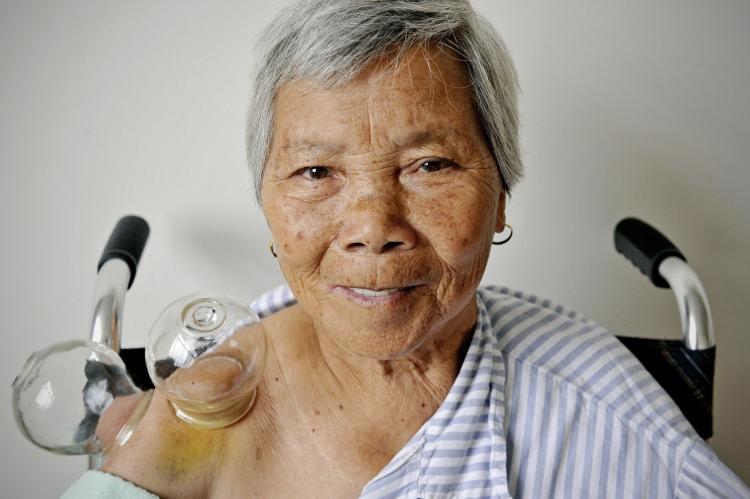In today’s society dominated by Western [allopathic] medicine, people tend to doubt the efficacy of Chinese medicine. Even in today’s China, Chinese medicine is often debated.
In fact, in the past 5,000 years, Chinese people have been dependent on Chinese medicine to cure diseases and to protect themselves against epidemics. Consequently, Chinese medicine has contributed to population growth throughout history.
Among the over 300 types of traditional medicines on the globe, Chinese medicine has become increasingly popular. The effectiveness of Chinese medicine can be seen from the growing number of people around the world who choose to study it.
First of all, Chinese medicine is a set of practical skills targeting a full array of diseases, from the common cold to more serious ones, such as tumors and heart disease. Many Chinese rely on these skills in daily life.
Professor He Yumin from Shanghai Traditional Chinese Medicine Institute said: “Take pancreatic cancer as an example, where the international prognosis is 4 to 6 months. However, 20 out of over 100 patients here in Shanghai who received our treatment have lived for 3 to 5 years. Most of them were either unable to go through surgery or chemotherapy and radiotherapy.”
An ironic folk saying says, “People seeking treatments in Western [allopathic] medicine usually die knowing the exact reason why; People seeking treatments in Chinese medicine usually live not knowing exactly why.”
Western [allopathic] medicine focuses on removing the symptoms using direct methods, so-called “fix the head when the head hurts; fix the foot when the foot aches.” Yet Chinese medicine emphasizes a dialectical analysis of the human body as a whole, where it is viewed as a collection of interconnected and interrelated systems. Therefore, the holistic approach inherent in Chinese medicine shows great potential in treating more complex illnesses such as cancer, AIDS and Alzheimer’s.
The World Health Organization defines the sub-health condition as a state between health and disease when all necessary physical and chemical indexes test negative, but the person experiences all kinds of discomfort and even pain. Western [allopathic] medicine is at its wits’ end when dealing with sub-health conditions. But Chinese medicine shows its strength in dealing with sub-health problems through examining the overall body conditions and derivative analysis of the symptoms.
Conventional Western medicine does not recognize the existence of meridian or energy channels in the human body, because anatomy cannot prove it. With a special camera used in Kirlian photography developed in 1939, where no films or emulsion are required, pictures showing the “biological plasma body” can be taken with the flash of light between electrodes. Such a picture was taken by a group of scientists at the Kirov State University and showed many brightly lit areas throughout the body correlating well with the meridian/acupuncture points.
For Chinese people, cherishing Chinese medicine also has a cultural aspect, for it is the manifestation of traditional Chinese culture in areas related to human health. Western medicine advocates “seeing is believing.” Chinese medicine follows the principle of Yin and Yang and the philosophy of mutual generation and mutual subjugation. Chinese medicine believes in the existence of energy channels and acupuncture points even though they cannot be seen with human eyes.
Furthermore, Chinese tradition holds that any matter in this universe has its physical side and its spiritual side. Both sides work together to form a complete entity.
For example, when one catches a cold, Western [allopathic] medicine says it is due to a virus infection but Chinese medicine says it is due to the imbalance of Yin and Yang resulting from blocked energy channels. Western [allopathic] medicine is like the warriors in a computer game fighting the virus at the front line. Chinese medicine is like the person behind the scenes killing the virus with an invisible hand.
Authentic Chinese medicine is rooted in the divinely inspired Chinese culture; it is so sad to admit that the essence of Chinese medicine has been lost. What is being passed down is merely the recipe or prescriptions. In China, Chinese medicine students receive training in Western medicine, but are not taught the essence and backbone of their own culture.
Published in New Epoch Magazine.







Friends Read Free